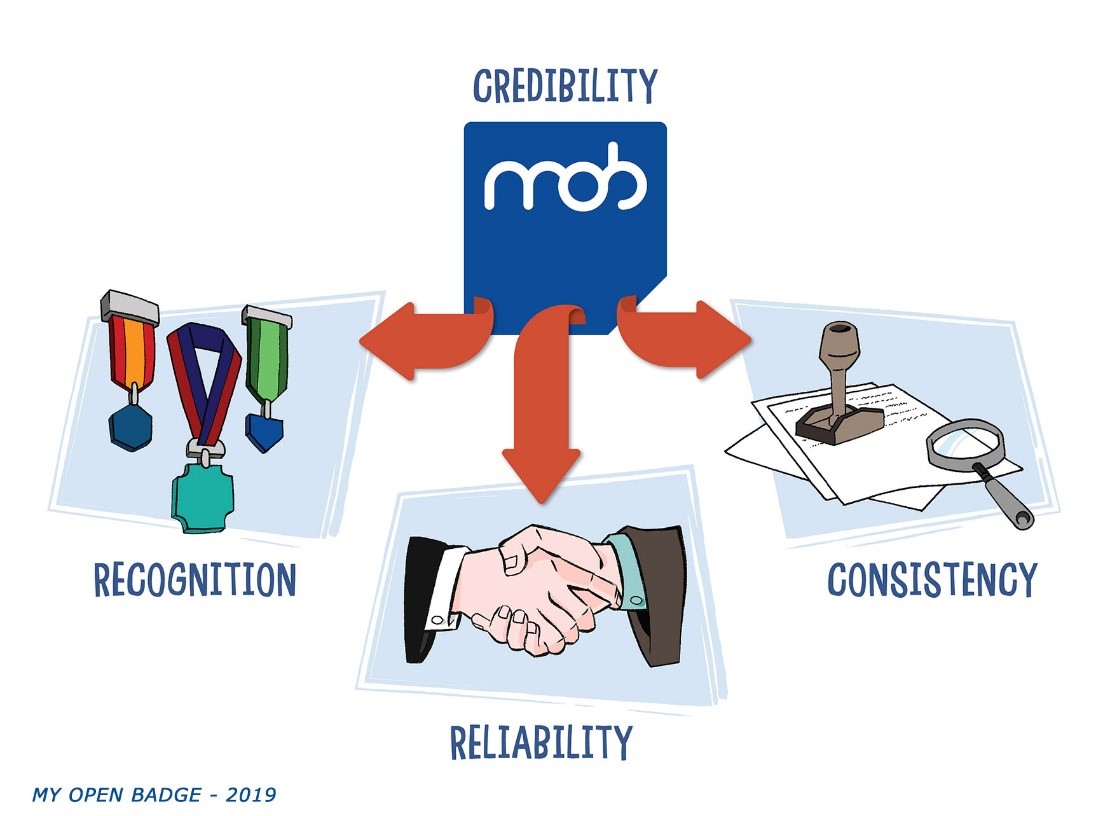How to create a credible Badge system?
One of the key aspects in the success of a Badge system is its credibility which, as highlighted in the picture, depends on three major factors:
- Recognition: the value of a Badge has to be recognized and appreciated by who will earn it and, more importantly, by who view it (i.e. a rectruiter) as evidence of the achieved results of its earner.
- Trustworthiness: the whole chain of environments and applications that come into play in badge management must be trustworthy. Likewise, the evaluation systems used to check the criteria for the assignment of the badges must be of proven reliability.
- Consistency: badges have to be assigned following specific criteria that are adequate to certify the skills and abilities represented by the badge. For example, if a badge represent a set of skills to use a specific device, the criteria used to test those skills need to encompass tests which can effectively judge if the candidate truly knows how to operate such a device.

As already mentioned, a key aspect to confer trustworthiness to a badge system are the ways in which the criteria implemented to assign the badges are checked. For this reason, each issuing entity needs to clearly state the various “evaluation methods” to use in order to assign badges. These methods can be basic candidate’s self-assessments, on-line exams, or an evaluation by one or a panel of experts.
Once the criteria relating the badges’ issuing have been verified, the release of the digital badges can be done in three different ways:
- Automatic release: the badge gets released by the system and sent via e-mail to the candidate who earned it, alternatively it gets automatically dropped-off in a specific personal backpack.
- Manual release: the badge gets released manually by the issuing entity (issuer) to the candidate who fulfilled all criteria required to earn it.
- Earner request: the badge gets issued manually by the issuer only once the latter received an explicit request by the candidate who believes to fulfill all the criteria needed for the badge’s release. For example event organizers or an e-learning system could release the attendees a specific code that would allow them to request the badge by logging on the badges platform.
